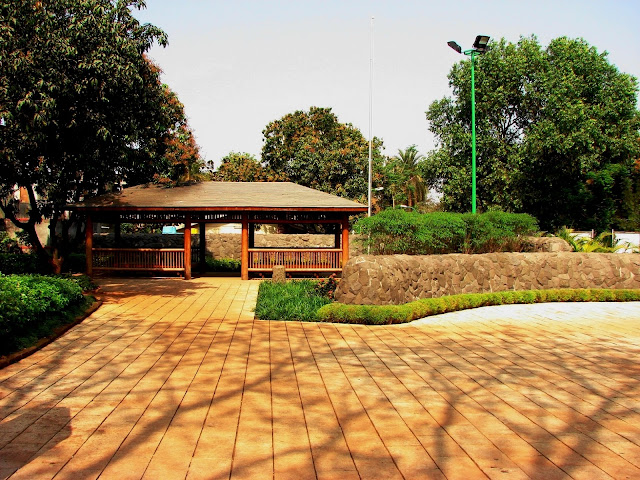The Sonia camp said that the Congress had failed to capitalise on Sonia’s charisma because of organisational weaknesses. Sonia accepted the argument and started toying with the idea of taking over the party. She, however, made it clear that unless Kesri stepped down gracefully and invited her to take over, she would not opt for a coup. But Chacha was in no mood to oblige.
The next chapter of the power struggle was put into motion. Worried CWC members held a series of secret conclaves to work out how to ‘install’ Sonia at the helm. Pranab Mukherjee, AK Antony and Jitendra Prasada were given the task of sounding Kesri out about retiring ‘gracefully’. Initially, Kesri’s ‘nephews’ Ahmad Patel and Ghulam Nabi Azad approached him. But Kesri laughed off the proposal. “You have been sent by Arjun Singh and George. It cannot be Soniaji’s words. If she wants me out, let her say so”, he told them.
A restless Pawar joined in the ‘Kesri hatao’ campaign. It was not that Pawar was enthusiastic about Sonia taking over, but the Maratha strongman was getting feedback from Mumbai and the corporate world that as long as Kesri was the head of the party, the industrial houses would not support it. For the next few weeks, Antony, Pranab, Pawar and Prasada met on numerous occasions to take stock of the situation. In these deliberations, Pawar and Prasada favoured a ‘surgical operation’, but Pranab and Antony wanted more time. Arjun Singh and Vincent George began drumming up support for Sonia among newly elected MPs.
Pranab pulls a fast one Soon a handful of Kesri supporters who held important party posts launched a counter-offensive. Led by party general secretary Tariq Anwar, this group sought to curtail CWC meetings that had to be convened by the party chief. Kesri was advised not to call any CWC meetings because the party’s bigwigs might ask him to step down. Kesri was convinced that the party constitution gave him ultimate powers and that, as long as he was the elected chief, nobody would dare to remove him.
The pro-changers, however, succeeded in persuading Kesri to call a CWC meet on 5 March 1998 to assess the party’s poor performance in the general elections. Kesri had little option but to concede. The meeting saw the CWC requesting Sonia to play a more direct and meaningful role. It took the unusual step of asking her to help pick a new leader of the Congress Parliamentary Party (CPP), a post that Kesri already held.
Kesri made his displeasure public. He accused Pawar of plotting against him in order to become CPP leader. Kesri told his supporter Tariq Anwar — who later joined Pawar’s NCP — that Sonia would not let Pawar become CPP leader. The old man was proved right on this count at least. When Sonia took over as party chief, she got herself elected CPP leader even though she was not an MP. She was helped by Pranab who suggested an amendment in the CPP constitution. It stated that any party leader was free to get elected to its parliamentary body even if he/she was not a member of either house of Parliament!
Amid many deliberations and behind-the-scenes activities, Kesri finally agreed to see Sonia. The loyalist in him could not resist unilaterally declaring that he was willing to step down as party chief, if she was going to take over from him. Kesri later recalled to the author how he was taken aback when she gently asked him, “When?”
Kesri’s dreams of a ‘commoner’ becoming prime minister were over. His constant refrain that the Congress president could not be ousted was no longer convincing. Some of his close aides asked him to defy the leadership. But Kesri could not muster the courage. He would keep recalling to anyone who cared to listen how Indira Gandhi had made him AICC treasurer. The bravado at being ‘elected’ AICC chief evaporated. But there was more drama to ensue.
Kesri told Sonia and the other restless CWC members that he would convene a press conference to make the formal announcement of his departure.
Unseemly tug of war On 9 March 1998, Kesri announced his resignation as Congress president, but before the ‘good news’ could travel from 24 Akbar Road to 10 Janpath, Kesri threw in a rider.
Under pressure from his coterie, Kesri claimed he had merely stated his intention to step down. The AICC chief said he had summoned the news agencies to clarify that he would place his resignation before the AICC general body meeting, which has more than a thousand delegates, to seek their approval. “They have elected me, and I will seek their permission to resign,” he said.
The next six days were chaotic, full of suspense and an unseemly tug-of-war. Kesri kept giving interviews and sound-bytes that were contradictory. The old guard called on him again but Kesri was defiant. “You wanted me to resign. I have done it”, he said adding that now it was up to him to convene the AICC session.
Prasada, who was the party’s vice president, took charge. He told Pranab, Antony and others that the time for ‘direct action’ had come.
A day before Kesri was unceremoniously removed, Prasada hosted a lunch at which thirteen of the twenty CWC members were present. In their presence, Pranab produced a strongly worded draft resolution that asked Kesri to immediately convene a CWC meet to end the uncertainty in the wake of his decision to resign as the party chief. The resolution said that Kesri’s gesture had bewildered party workers all over the country and that he should step down in Sonia’s favour.
Kick the dog On 14 March 1998, 24 Akbar Road was a mute witness to a constitutional coup that saw the rather unsavoury exit of an ‘elected’ Congress president. Kesri was so upset with the day’s events that he kicked his loyal Pomeranian, Ruchi. The ailing Kesri, then seventy-nine, had arrived at the CWC meeting at 24 Akbar Road convinced that a party president could not be forced out. He did not know that before the 11 am meeing, most CWC members had gathered at Pranab’s home to endorse two crucial statements. The first was an ultimatum asking Kesri to step down; the second, a resolution replacing him with Sonia Gandhi.
The moment Kesri stepped into the hall, he knew something was amiss. Loyalist Tariq Anwar was the only one who stood up to greet him. After Kesri sat down, Pranab began reading out a resolution’thanking’ him for his services and invoking Clause J of Article 19 of the Congress constitution.
A horrified Kesri listened to its provisions: the CWC could act beyond its constitutional powers in ‘special situations’ as long as it got the decision ratified by the AICC within six months. Party leaders later admitted that the provision did not specifically say that an elected party president could be removed with its help.
‘Arre yeh kya keh rahe ho (Hey, what are you saying)’ was all Kesri could say when he found his voice. But there was a smirk on the faces of his colleagues. Kesri raved against the ‘unconstitutional’ meeting and loudly protested that he was still the Congress chief. But Prasada, the vice president of the party was already announcing, to thunderous applause, that ‘Madam Sonia Gandhi’ was their new leader.
The axed president stormed out, followed by Anwar. He spent more than an hour in his office, calling up his advisors, but it was already getting difficult to hear them amid the crackers and slogans welcoming Sonia. When Kesri stepped out of the room, his name board was missing, already replaced by a computer printout that said: ‘Congress President Sonia Gandhi’.
Within minutes, the Special Protection Group moved into the party headquarters. By the time Sonia arrived for the day’s second CWC meeting, party leaders who used to drive in had been told to get out of their cars on the street and walk in.
When Kesri reached his Purana Qila residence, he was in no mood for Ruchi’s joyous welcome. However, the moment he kicked her, he was overwhelmed by remorse. The finest of biscuits — presented to Kesri during his tenure — were offered to the puzzled pooch.
When Sonia, the new party chief, arrived a few hours later to comfort him, Kesri rushed to greet her. Neither mentioned the ‘coup’. Sonia sought Kesri’s blessings and guidance, and the old man puffed up with pleasure. By 7pm he was singing paeans to the Nehru-Gandhis while promising to get even with Pranab, Prasada and Arjun.
While Congress leaders hailed Sonia’s appointment, Khare lashed out at the constitutional coup. He remarked in The Hindu: ‘The constitutional coup was hailed widely as restoring the party’s leadership back to the site of its only natural entitlement — the Nehru-Gandhi family. When the historians get to chronicle the import of that eventful day, most of the honourable men of the Congress would be shown to have acted way less than honourably; even those who owned their rehabilitation and place in the CWC to the old man had no qualms in abandoning him. The transition that day cast the Congress once again in the dynastic mould, and the consequences are visible’.
***
Kesri died a disturbed and disillusioned man. He could not reconcile himself to his unceremonial ouster. There was much that he wanted to say, but he suffered an asthma attack and then slipped into a coma. Kesri’s end came on 24 October 2000. He was eighty one. His faithful dog Ruchi died the same evening.
Excerpted from 24 Akbar Road: A Short History of The People Behind The Fall And Rise of The Congress by Rasheed Kidwai, with permission from Hachette India (Pvt) Ltd. 24 Akbar Lane, 288 pages, Rs495, releases in India on July 10.














